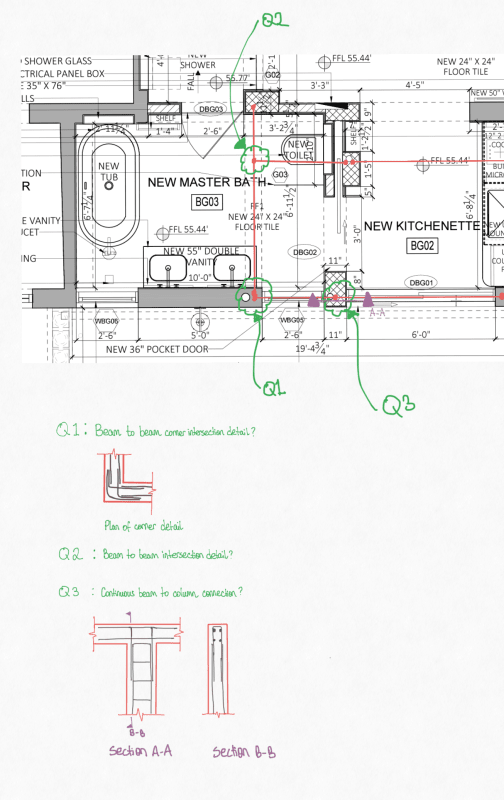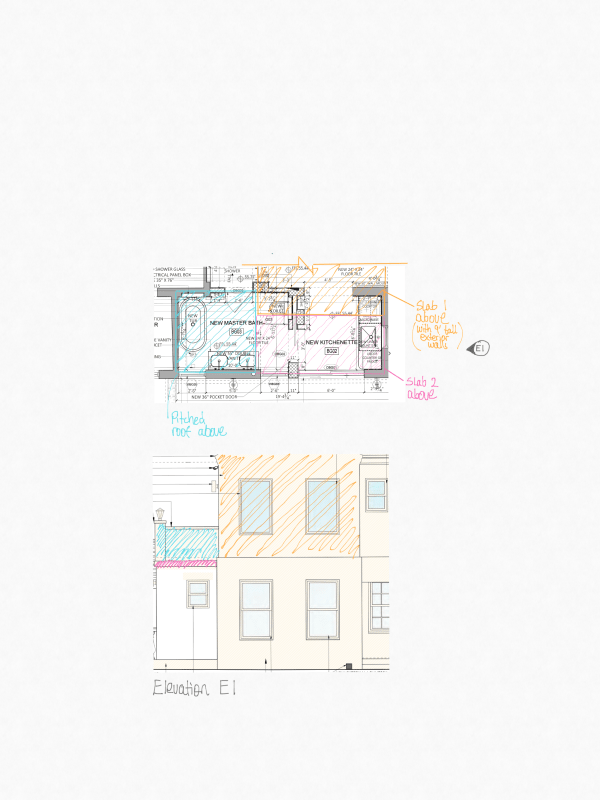Hi there,
I'm working on a reinforced concrete residential project where there will be a slab cast on top of a lintel/beam framing plan, as shown below :

There are a few locations where there will be an intersection between structural elements and I am looking for best detailing practice for a residential situation. The floor loads are quite low.
For Q1 : The lintels will need to bear on the same corner support. If I connect the two lintels at the corner as shown in that detail, would I still be able to design the lintels as simply supported? Or would I need to design both lintels as pinned one end and fixed on the joined corner end (including fixed hogging reinforcement at the top)? Also I know that the detail I sketched is used for corner walls but can this also be applied to corner beams? Is there any guidance that someone can offer for this scenario?
For Q2 : Would someone be able to provide guidance on the best practice detail for concrete beam to beam connections. For this intersection, in addition to the vertical load from the secondary beam, would I also need to account for torsion (minimum eccentricity or something)? Is there any guidance out there for this sort of problem?
For Q3 : Would the detail I show be the preferred detail to connect a reinforced concrete column to a continuous beam with a u bar? Or is the preferred detail to have the column vertical bars extend with a 90 degree bending into and lapping with the longitudinal rebar in the beam with the minimum lap length?
Any guidance would be greatly appreciated.
I'm working on a reinforced concrete residential project where there will be a slab cast on top of a lintel/beam framing plan, as shown below :

There are a few locations where there will be an intersection between structural elements and I am looking for best detailing practice for a residential situation. The floor loads are quite low.
For Q1 : The lintels will need to bear on the same corner support. If I connect the two lintels at the corner as shown in that detail, would I still be able to design the lintels as simply supported? Or would I need to design both lintels as pinned one end and fixed on the joined corner end (including fixed hogging reinforcement at the top)? Also I know that the detail I sketched is used for corner walls but can this also be applied to corner beams? Is there any guidance that someone can offer for this scenario?
For Q2 : Would someone be able to provide guidance on the best practice detail for concrete beam to beam connections. For this intersection, in addition to the vertical load from the secondary beam, would I also need to account for torsion (minimum eccentricity or something)? Is there any guidance out there for this sort of problem?
For Q3 : Would the detail I show be the preferred detail to connect a reinforced concrete column to a continuous beam with a u bar? Or is the preferred detail to have the column vertical bars extend with a 90 degree bending into and lapping with the longitudinal rebar in the beam with the minimum lap length?
Any guidance would be greatly appreciated.

